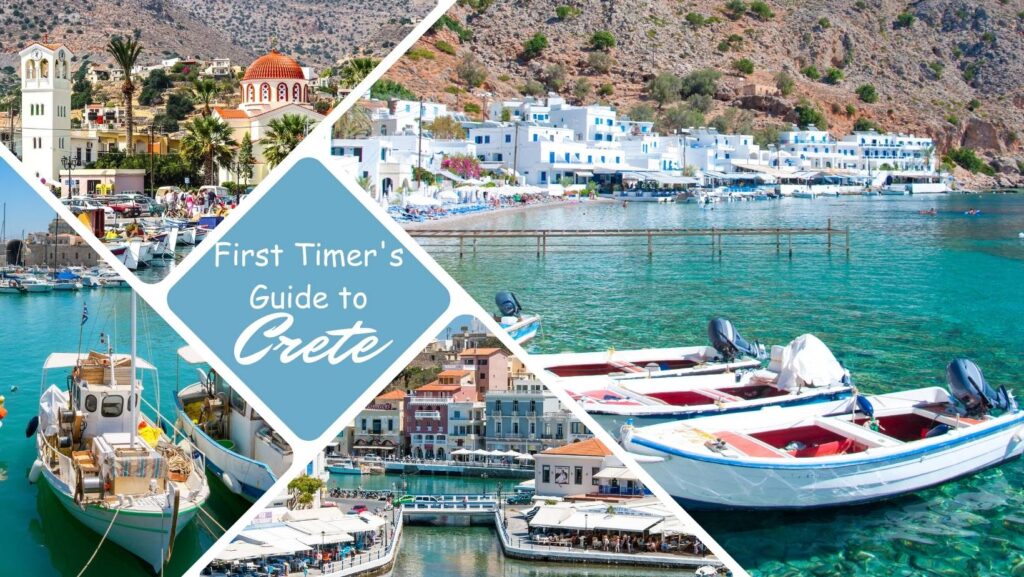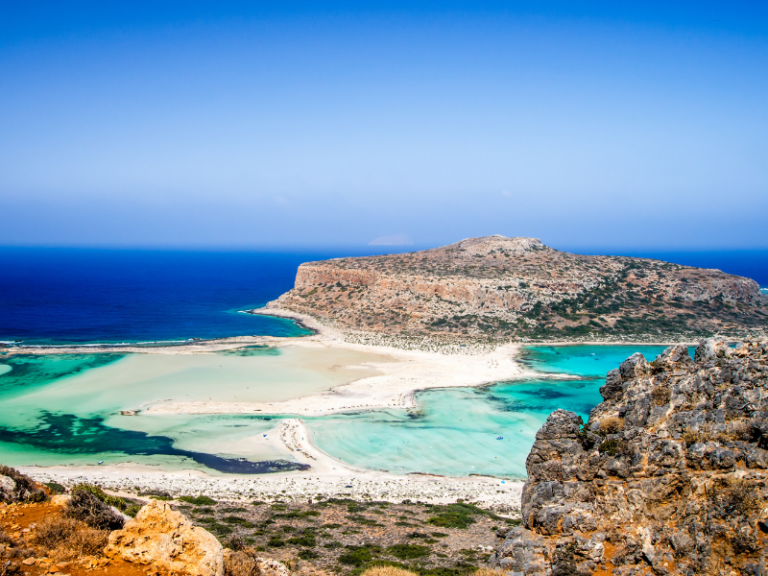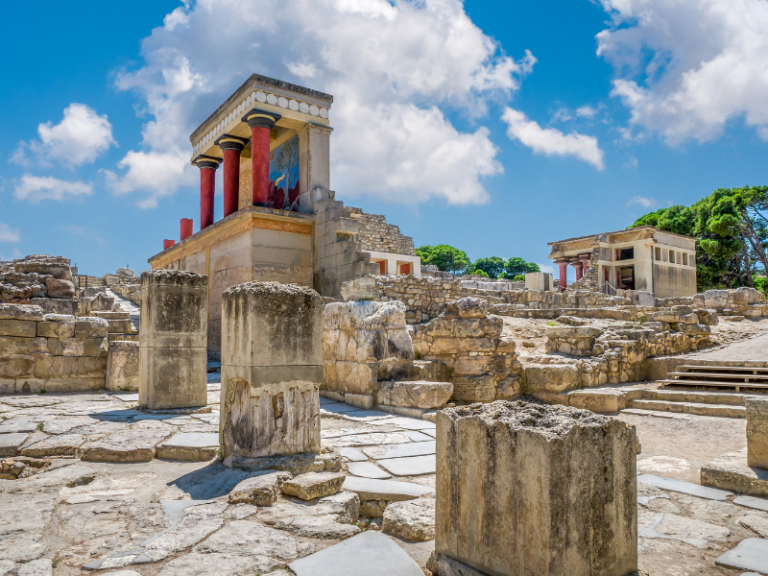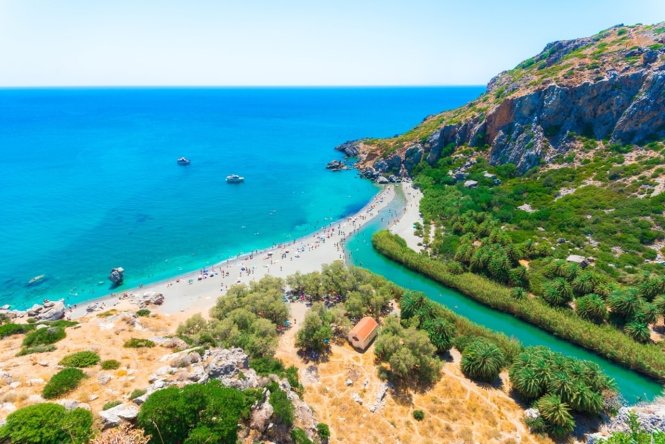The Myth of the Minotaur's Labyrinth: Timeless Secrets of Crete
by Crete Locals
- Posted 9 months ago
- Knossos Palace
Table of Contents
The Minotaur’s labyrinth, deeply embedded in Crete’s ancient history, represents one of the most captivating tales of the world’s bygone era. Beyond just a story, it reveals Crete’s sociocultural milieu and religious beliefs of the time. This legend, rich with mysteries and timeless allure, paints a vivid tapestry of mythical beings, cunning heroes, intricate architecture, and tragic twists.
The Roots of the Name: Understanding “Minotaur’s Labyrinth”

While the Minotaur’s labyrinth stands central in many tales, its etymological origin is equally fascinating. The sprawling Palace of Knossos, an architectural marvel of the Minoan civilization, reveals clues: images of a double-headed axe, or “labrys”. During Sir Arthur Evans’ extensive archaeological pursuits, he theorized that “labyrinth” might signify “The Palace of the Double-headed axe”. Another layer to this is an alternative theory stemming from “lavra”, an old term denoting “narrow street”. Given the palace’s intricate layout, with its myriad rooms and corridors, Sir Arthur Evans postulated that it could indeed be the inspiration behind the legendary Minotaur’s labyrinth tales.
Knossos Palace: Crete’s Ancient Marvel

Knossos Palace, situated on the island of Crete, stands as a testament to the advanced civilization of the ancient Minoans. Often referred to as Europe’s oldest city, the palace complex boasts intricate frescoes, labyrinthine corridors, and sophisticated plumbing systems, reflecting a rich blend of architectural prowess and cultural sophistication. Associated with legendary tales of King Minos, the Minotaur, and the Labyrinth, Knossos not only provides a window into the Minoan world but also serves as a foundation for numerous myths and legends that have shaped the tapestry of Greek mythology.
Greek Artistic Depictions: Labyrinths Beyond Myths

The Minotaur’s labyrinth wasn’t confined to oral traditions and texts. Ancient Greek art proudly displays this motif, most notably in the Greek Key design, a pattern signifying infinity and unity. Beyond patterns, coins from that era portray more elaborate seven-course depictions of the Minotaur’s labyrinth, showcasing not just its story but its profound cultural and economic significance.
The Minotaur’s Imprisonment: Why the Labyrinth?

Every myth has its monster, and in this tale, it’s the Minotaur – a terrifying creature, half-man and half-bull. But what led to this fearsome beast being contained within a labyrinth? Born from a curse, the Minotaur’s hybrid nature made it an anomaly, leading it to crave human flesh as it matured. King Minos, desperate for a humane solution and to protect his kingdom, turned to an oracle for guidance. The divine response? The Minotaur’s labyrinth, an architectural wonder masterfully crafted by the brilliant Daedalus, would become the beast’s prison, ensuring safety for the palace’s inhabitants.
The Tragedy of Androgeous: An Athenian Tribute
Interlinked with the Minotaur’s labyrinth is the sorrowful narrative of Androgeous, King Minos’ athletic and valiant son. His triumphs in games, however, attracted envy, leading to his untimely death. Athens, implicated in this tragedy, faced a grim tribute as reparation: periodically sending unarmed youths and maidens into the treacherous Minotaur’s labyrinth. There, they’d face almost certain doom, either meeting a brutal end at the Minotaur’s hands or being hopelessly lost within the maze’s intricate confines.
Theseus: The Hero of the Tale

Amidst the gloom of despair, emerges a beacon of hope: Theseus, an Athenian prince. Determined to halt the grim Athenian tribute and restore his city’s honour, he hatches a daring plan. Posing as a sacrificial candidate, his aim is bold – to penetrate the heart of the Minotaur’s labyrinth, confront the beast, and liberate his people from the curse. With the enigmatic Ariadne, King Minos’ daughter, as an ally and armed with a guiding thread (a symbol of hope and strategy), Theseus skillfully navigates the Minotaur’s labyrinth’s enigmatic corridors. His bravery culminates in a thrilling encounter, where he triumphs over the beast.
A Heart-wrenching Epilogue: King Aegeus’ Fate

The tale, while culminating in a heroic victory, doesn’t end in joy. A series of post-adventure miscommunications and missteps cast a shadow on the triumph. King Aegeus, scanning the horizon for his beloved son’s return and misled by the sight of black sails, is overcome by grief. Believing his son Theseus to be dead, he plunges despondently into the sea – forever marking it with his name, giving us the Aegean Sea.
The Minotaur’s labyrinth, encompassing its myriad tales, complex characters, and profound lessons, remains a shining beacon of Crete’s rich history and the timeless allure of ancient myths.
Share your thoughts!
You might be also interested
The Top 8 Things to Do in Crete



- From
- €31.45


- From
- €30.6













